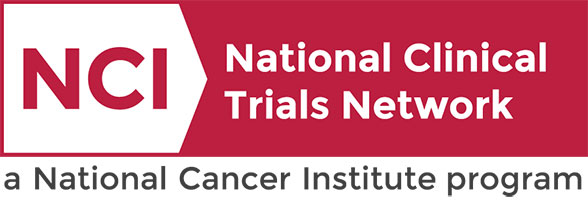Patient Search
 |
 |
|
KaCrole Higgins was diagnosed with breast cancer in 2020. “In May 2020, I found a lump in my breast. I cried. By June, it was diagnosed as breast cancer, triple positive, stage 1A. While getting this cancer diagnosis was devastating, it also became an opportunity. Suddenly, the cancer gave me clarity. It gave me clarity about what was important, what was good in my life, what was toxic in my life, and what I needed to do.” Click below to read more of KaCrole’s story |
If Landon Ryan had been diagnosed with bilateral retinoblastoma 10, 20 or 30 years ago, she might not be here today with nearly perfect vision.Thanks to recent improvements in the treatment for this rare form of cancer that almost exclusively affects children under the age of 5, the diagnosis had the power to change Landon’s life when she was 11 months old, but not to take it — or her eyesight. Click below to learn more about Landon and her story. https://momentum.vicc.org/2022/04/brighter-outlook/ |
TPIV100 and Sargramostim for the Treatment of HER2 Positive, Stage II-III Breast Cancer in Patients With Residual Disease After Chemotherapy and Surgery
This phase II trial studies how well TPIV100 and sargramostim work in treating patients with HER2 positive, stage II-III breast cancer that has residual disease after chemotherapy prior to surgery. It also studies why some HER2 positive breast cancer patients respond better to chemotherapy in combination with trastuzumab and pertuzumab. TPIV100 is a type of vaccine made from HER2 peptide that may help the body build an effective immune response to kill tumor cells that express HER2. Sargramostim increases the number of white blood cells in the body following chemotherapy for certain types of cancer and is used to alert the immune system. It is not yet known if TPIV100 and sargramostim will work better in treating patients with HER2 positive, stage II-III breast cancer.
Not Available
II
Not Available
NCT04197687
VICCBRE2241
Hypofractionated Radiotherapy Followed by Surgical Resection in the Treatment of Soft Tissue Sarcomas
Sarcoma
Sarcoma
The trial will use neoadjuvant hypofractionated radiotherapy followed by surgical resection in the treatment for soft tissue sarcoma. It will allow patients to be treated over a shorter course (5 or 15 days of radiation) compared to the traditional 5 week regimen. It is proposed that this will be possible without increasing the risk of wound complication or local recurrence compared with a traditional 5 week course of pre-operative radiation.
Sarcoma
II
Shinohara, Eric
NCT04506008
VICCSAR2062
DCIS: RECAST Trial Ductal Carcinoma In Situ: Re-Evaluating Conditions for Active Surveillance Suitability as Treatment
Breast
Breast
The goal of this trial is to see if active surveillance monitoring and hormonal therapy in patients diagnosed with ductal cell carcinoma in situ (DCIS), an early stage of breast cancer, can be an effective management of the disease.
Participants will be asked to receive control hormonal therapy or an investigational hormonal therapy treatment. Participants will be asked to return for evaluation with MRI at three months and six months. Depending on the evaluation participants will have the option to continue on the treatment. If the evaluation suggests surgery is recommended, the participant will discontinue the study treatment and will undergo surgery. In addition to the treatment and MRI evaluation, participants will be asked to provide blood sample to understand their immune status, provide saliva sample for genetic testing, provide the study with a portion of the tissue or slides generated from tissue removed during surgery performed as part of their standard of care.
Participants will be asked to receive control hormonal therapy or an investigational hormonal therapy treatment. Participants will be asked to return for evaluation with MRI at three months and six months. Depending on the evaluation participants will have the option to continue on the treatment. If the evaluation suggests surgery is recommended, the participant will discontinue the study treatment and will undergo surgery. In addition to the treatment and MRI evaluation, participants will be asked to provide blood sample to understand their immune status, provide saliva sample for genetic testing, provide the study with a portion of the tissue or slides generated from tissue removed during surgery performed as part of their standard of care.
Breast
II
Meszoely, Ingrid
NCT06075953
VICC-DTBRE23082
Testing the Use of AMG 510 (Sotorasib) and Panitumumab as a Targeted Treatment for KRAS G12C Mutant Solid Tumor Cancers (A ComboMATCH Treatment Trial)
This phase II ComboMATCH treatment trial tests how well AMG 510 (sotorasib) with or without panitumumab works in treating patients with KRAS G12C mutant solid tumors that may have spread from where it first started to nearby tissue, lymph nodes, or distant parts of the body (advanced). Sotorasib is in a class of medications called KRAS inhibitors. It works by blocking the action of the abnormal protein that signals cancer cells to multiply. This helps stop or slow the spread of cancer cells. Panitumumab is in a class of medications called monoclonal antibodies. It works by slowing or stopping the growth of cancer cells. Giving combination panitumumab and sotorasib may kill more tumor cells in patients with advanced solid tumors with KRAS G12C mutation.
Not Available
II
Choe, Jennifer
NCT05638295
ECOGMDEAY191-E5
Testing the Use of Neratinib or the Combination of Neratinib and Palbociclib Targeted Treatment for HER2+ Solid Tumors (A ComboMATCH Treatment Trial)
This phase II ComboMATCH treatment trial compares the effect of neratinib to the combination of neratinib and palbociclib in treating patients with HER2 positive solid tumors. Neratinib and palbociclib are in a class of medications called kinase inhibitors. They work by blocking the action of an abnormal protein that signals cancer cells to multiply. This helps slow or stop the spread of tumor cells. Giving neratinib and palbociclib in combination may shrink or stabilize cancers that over-express a specific biomarker called HER2.
Not Available
II
Choe, Jennifer
NCT06126276
ECOGMDEAY191-N5
Circulating Tumor DNA to Guide Changes in Standard of Care Chemotherapy
Breast
Breast
This phase II trial tests how well evaluating circulating tumor deoxyribonucleic acid (ctDNA) works to guide therapy-change decisions in treating patients with triple-negative breast cancer (TNBC) that has spread from where it first started (primary site) to other places in the body (metastatic). This study wants to learn if small pieces of DNA associated with a tumor (called circulating tumor DNA, or ctDNA) can be detected in investigational blood tests during the course of standard chemotherapy treatment for breast cancer, and whether information from such investigational ctDNA blood testing could possibly be used as an early indication of chemotherapy treatment failure. It is hoped that additional information from investigational blood testing for ctDNA could help doctors to switch more quickly from a standard chemotherapy treatment that typically has significant side effects and which may not be working, to a different standard treatment regimen against TNBC, called sacituzumab govitecan. Sacituzumab govitecan is a monoclonal antibody, called hRS7, linked to a chemotherapy drug, called irinotecan. hRS7 is a form of targeted therapy because it attaches to specific molecules (receptors) on the surface of cancer cells, known as TROP2 receptors, and delivers irinotecan to kill them. Studying ctDNA may assist doctors to change therapy earlier if needed, and may improve health outcomes in patients with metastatic TNBC.
Breast
II
Abramson, Vandana
NCT05770531
VICCBRE2257
Evaluation of Co-formulated Pembrolizumab/Quavonlimab (MK-1308A) Versus Other Treatments in Participants With Microsatellite Instability-High (MSI-H) or Mismatch Repair Deficient (dMMR) Stage IV Colorectal Cancer (CRC) (MK-1308A-008/KEYSTEP-008)
The purpose of this study is to assess the efficacy and safety of co-formulated pembrolizumab/quavonlimab versus other treatments in participants with MSI-H or dMMR Metastatic Stage IV Colorectal Cancer.
Not Available
II
Not Available
NCT04895722
VICCGI2145
Gene Signatures to Guide HR+MBC Therapy in a Diverse Cohort
Breast
Breast
This is an open-label, multicenter, two-arm Phase II clinical trial that will evaluate the impact of 2nd line chemotherapy (i.e. capecitabine) on survival in patients with non-Luminal A hormone receptor-positive (HR+) metastatic breast cancer (MBC)
Breast
II
Reid, Sonya
NCT05693766
VICCBRE2256
Cabozantinib for Patients With Recurrent or Progressive Meningioma
Neuro-Oncology
Neuro-Oncology
A Phase II Study of Cabozantinib for Patients with Recurrent or Progressive Meningioma
Neuro-Oncology
II
Mohler, Alexander
NCT05425004
VICC-ITNEU23261
Evaluation of Talazoparib, a PARP Inhibitor, in Patients With Somatic BRCA Mutant Metastatic Breast Cancer: Genotyping Based Clinical Trial
Breast
Breast
This research is to evaluate the effectiveness of Talazoparib as a potential treatment for metastatic breast cancer with a BRCA 1 or BRCA 2 mutation.
Breast
II
Abramson, Vandana
NCT03990896
VICCBRE2265


